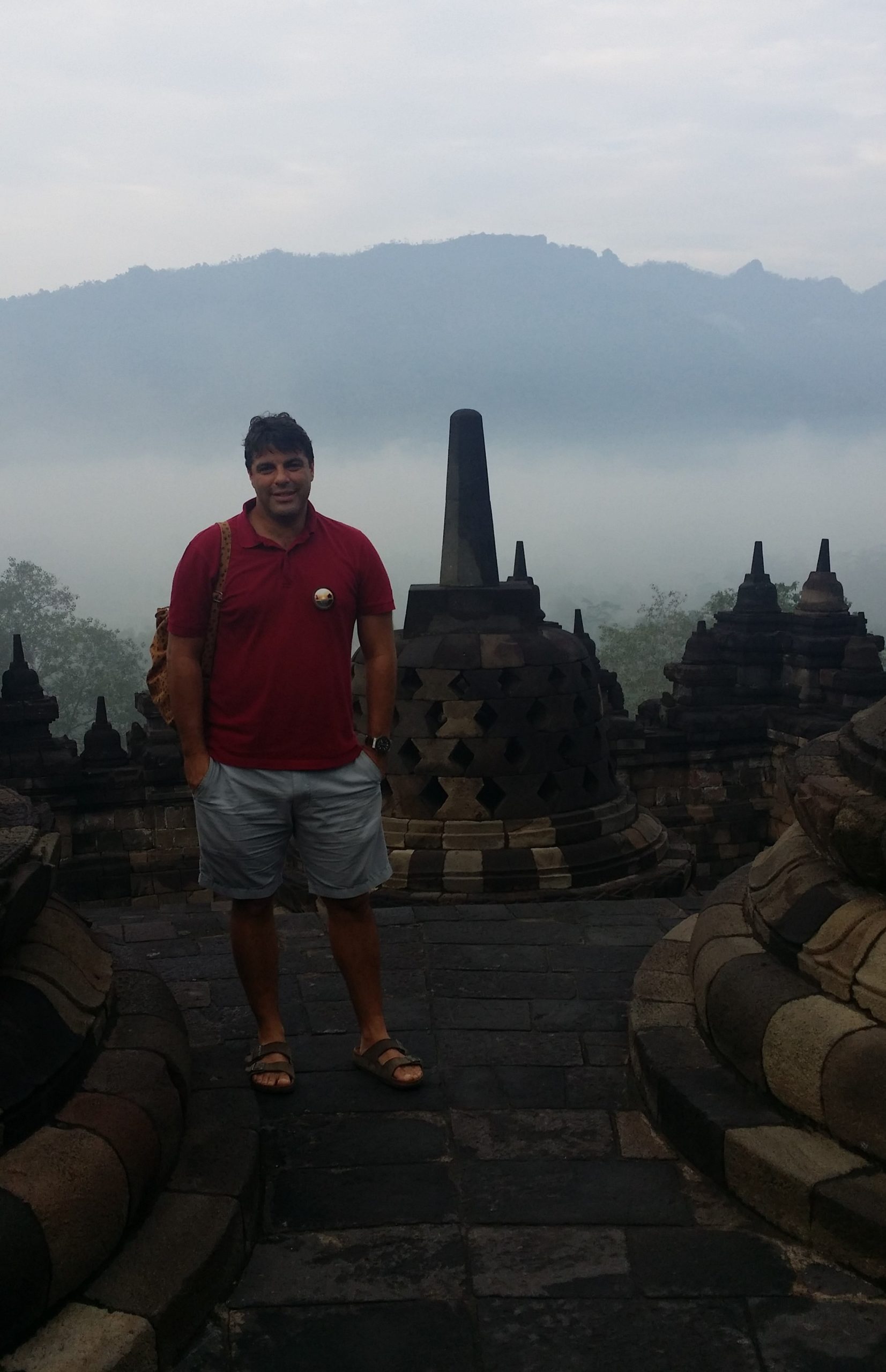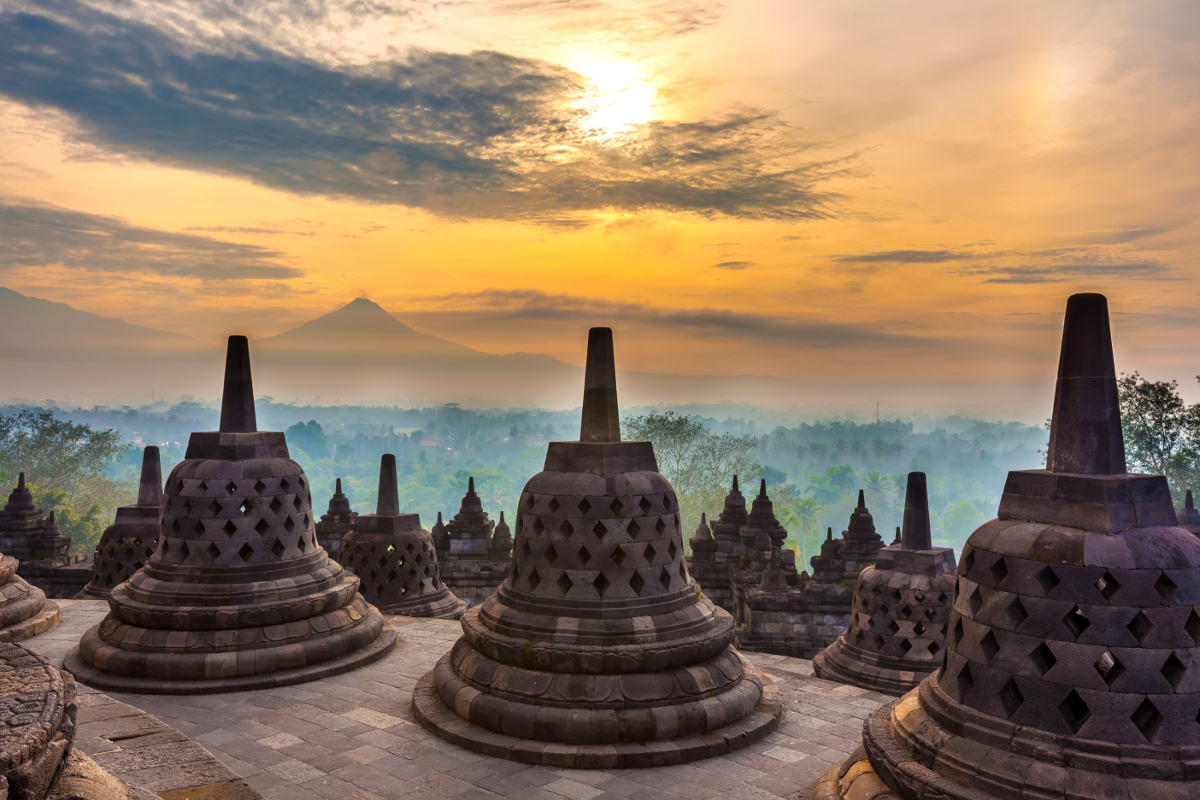While so many of us are in various states of lock-down, quarantine and home isolation, on a daily basis I will try to re-post a story from the Road Warrior “vault” – tales from various trips and adventures over the past decade. In doing this I get to chew up isolation hours, while you get something new to read each day (or reread, if it’s a post you’ve previously seen). Plus, as a bonus, we’ll get to virtually travel the world together, in this trying time when real travel is all but impossible.
This post – of when I visited the Borobudur temple in Java, Indonesia – was originally published in May 2016. Borobudur is a truly special place – one of my all-time favorites – and revisiting it in my imagination is, as always, a reminder of the magic and wonder that travel can bring.
****
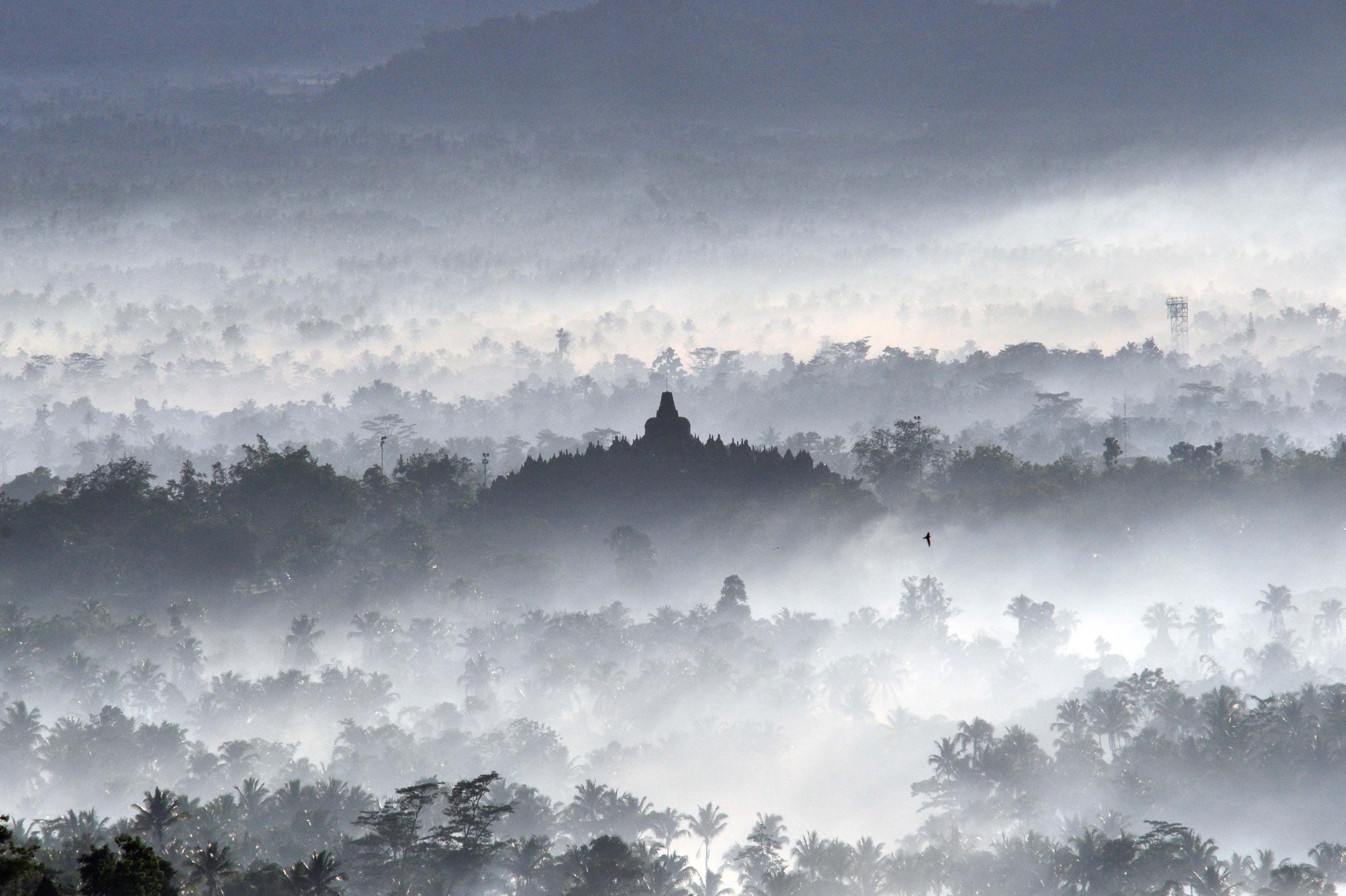
As a kid, I dreamed of being a travelling explorer, yesteryear style. The thought of stumbling through a jungle in search of a long-forgotten temple appealed to my young brain; the notion of doing a Grand Tour of Europe, or arriving in Istanbul on a rickety steam train, appealed to my romantic heart.
So I read up on great tales of exploration: Marco Polo and Ibn Battuta’s journeys in Asia; Francisco Pizarro and Walter Raleigh’s in South America; David Livingstone’s in Africa. I devoured all the travel literature I could find: Somerset Maugham, Norman Lewis and Paul Theroux became favorites. And also fictional explorers like Indiana Jones, TinTin, and anyone in a Jules Verne novel.
When I was old enough I began seeking out these experiences for myself. But sadly, I was born into an age where few places in the world are yet to be “discovered”. There are no new continents to be found, no lost kingdoms to explore, no abandoned cities waiting to be unearthed. Googlemaps works just as well in rural Kazakhstan as it does in downtown Los Angeles.
Then, as I traveled more, I slowly realized it is still possible to get a taste of what it must have been like for travelers back then. To experience some of the wonder that Ludwig Burckhardt must have felt when he saw the Rose City of Petra in 1812, carved into the rocks of the Jordanian desert. Or the goosebumps Hiram Bingham must have got in 1911 on reaching Machu Picchu, the “lost city of the Incas”, that had been abandoned five-hundred years before.
Although this kind of travel requires patience, a willingness to get off the beaten path, and a high tolerance for shitty hotels and long bumpy bus-rides. Plus you need a healthy dose of the most important ingredient of all: imagination. You must be able to forget the tourist masses, close your eyes to the impact of modernity, and allow your mind to take you back in time.
Sometimes it is easy. Places like Bagan in Myanmar and Angkor Wat in Cambodia are, even today, relatively untouched, so they lend themselves naturally to “explorer moments”. Other times, it is almost impossible. No matter how powerful your imagination, you can never truly blot out the hordes that swarm the Forbidden City in Beijing, or the Blue Mosque in Istanbul. You can never really see Bangkok’s temples, or Europe’s grand palaces, as being anything other than modern-day tourist zoos.
And the march of global tourism is relentless, so you need to act fast.
Twenty years ago I visited Jaisalmer, a fortified town on the edge of the Thar Desert in India. It took fifteen hours by overnight bus to get there. I rode a camel with a turban wrapped around my head, walked the ramparts, watched the sunset over the dunes, and drank tea with an old merchant in the market. Even then Jaisalmer was popular with the backpacker crowd, but it hadn’t yet been overrun. So with a bit of imagination I was able to conjure up a Lawrence of Arabia feeling.
But when I went back there ten years later, I found that in a relatively short time the Jaisalmer I knew had all but disappeared. A new airport had brought the tourists, and along with them came high-rise hotels, endless souvenir stores, and internet cafes. It was still an amazing place to visit, but any sense of exploration – even an imagined one – was totally out of the question. On that visit, Lawrence was sent back to Arabia.
The same holds true for so many other amazing places around the world. Visiting Poland as a teenager in 1988 felt like I was going behind the Iron Curtain, to a place where no Westerner had ever been before. Nowadays, when in Poland I am firmly in Europe, and that means I am never far from a Starbucks coffee or Zara store. Ditto Prague. Ditto all of Vietnam. And ditto Havana in Cuba, five years from now.
And all of which is what makes Borobudur, in Java, Indonesia, so truly unique and remarkable.
***
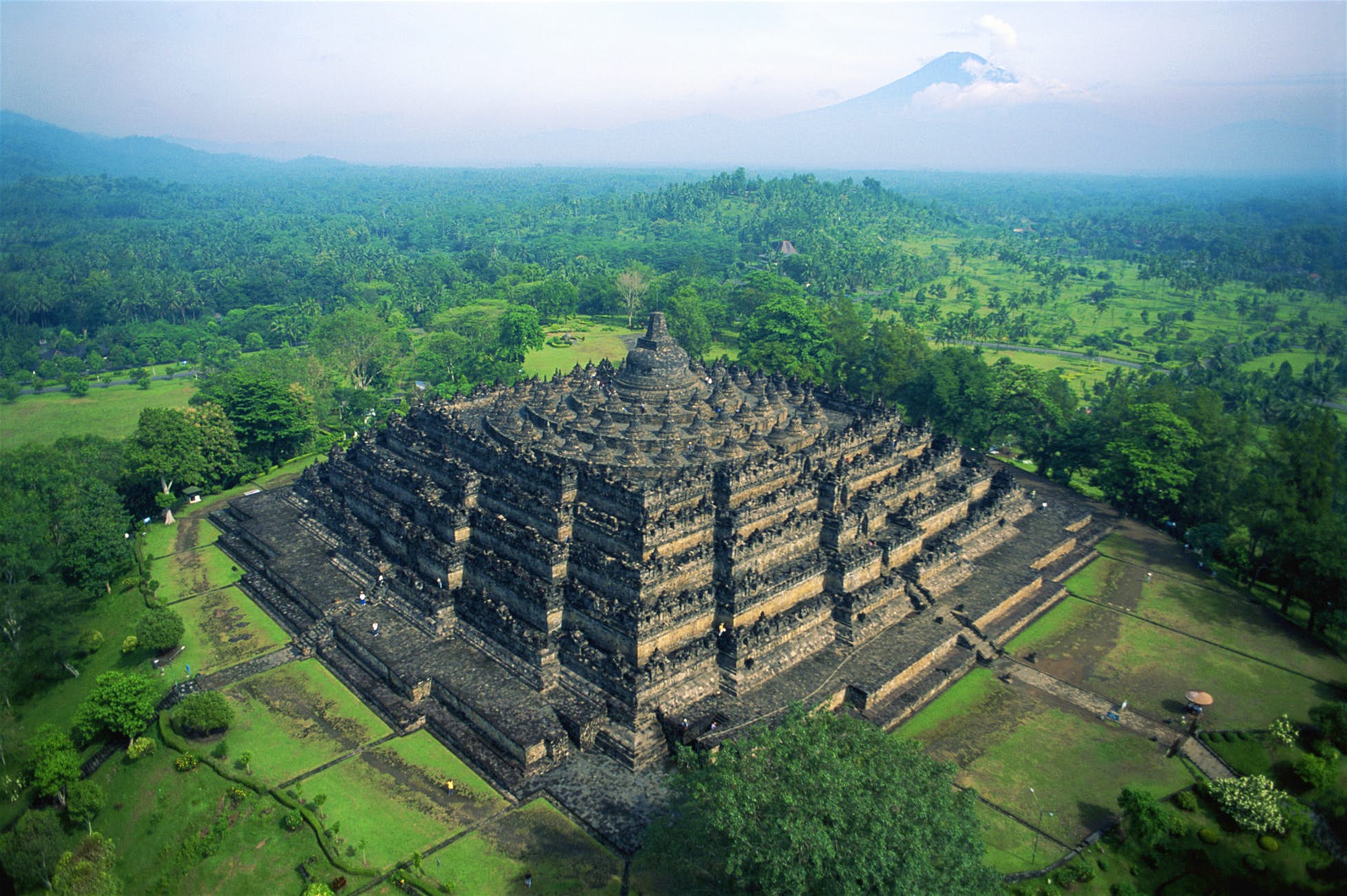
First though, the basics: facts and figures to set the scene.
Borobudur is a Buddhist temple on the Indonesian island of Java. It was built on a remote hilltop in a secluded valley, in the 8th and 9th centuries, at a time when Java was a Buddhist heartland. The general estimate is that construction took about 75 years. Over 2 million individual carved stones were used, balanced one on top of the other and fitted together without the use of a single nail, or any mortar. There are no written records from the time, so no-one has any clue as to why exactly it was built, or who exactly built it. Or, for that matter, why it was abandoned not that long after.
Borobudur then lay dormant for almost 1,000 years, covered over by jungle, and ash from a nearby active volcano. Apart from locals, no-one had the faintest idea it was even there. In 1814 one of those locals mentioned the existence of a “big monument” to Stamford Raffles, the then British Governor of Java. He was a bit of an antiquities nut, and immediately sent a young Dutch engineer, H.C. Cornelius, to check it out. Who in turn was blown away by what he found. So much so that Cornelius spent the next twenty years of his life clearing the surrounding jungle, excavating the site, rebuilding the structures, and generally trying to restore Borobudur to its former glory.

This process, however, exposed the temple to the elements, for the first time in centuries, and its condition began to rapidly decline. Two further restoration projects followed, with the most recent commencing in 1975 and finishing in 1982. During this time Borobudur was shut to the public, and pulled apart brick by brick. Solid foundations were laid, modern drainage systems installed, and the stones cleaned and treated to protect against weathering. Every stone was cataloged, and then the whole thing was meticulously reassembled like a life-size jigsaw puzzle. 600 people worked on the project, a stunning example of what historical conservation work can achieve if done right.
Architecturally, Borobudur is a marvel, consisting of nine stacked levels atop a base platform, arranged into three tiers: five concentric square terraces at the bottom, three circular platforms on top of that, and at the apex a huge domed stupa. The levels are connected via a series of stairways at each point of the compass, and the lower levels are surrounded by walkways and balustrades. The square base platform is 123 meters on each side, and each level above is marginally smaller than the one below. So when viewed from a distance Borobudur looks like a stepped pyramid, and when viewed from above, like a giant mandala.
This is no accident: a lot of Buddhist symbolism is embedded into Borobudur’s design. The dome at the top represents Nirvana. To reach it you have to walk up through the various levels of the temple, representing the various stages of consciousness towards enlightenment. The base platform represents Kamadhutu (the world of desire), the next four square levels Rupadhatu (the world of forms), and finally the upper three circular levels, Arupadhutu (the world of formlessness).
I especially like that when standing at the base, the dome at the top of Borobudur can’t be seen. A deliberate feature intended to remind you that even if you know Nirvana is there, when lost in the world of earthly desire it is always beyond your grasp.
I also like that the five lower levels are such that when walking around them the view of the outside world is blocked out by balustrades. This forces you to look at the carved reliefs that decorate the walls, top to bottom, like a giant picture book. A very giant picture book, mind you, given that there are 2,672 relief panels in total, occupying 3,000 m2 of space. That’s a lot.
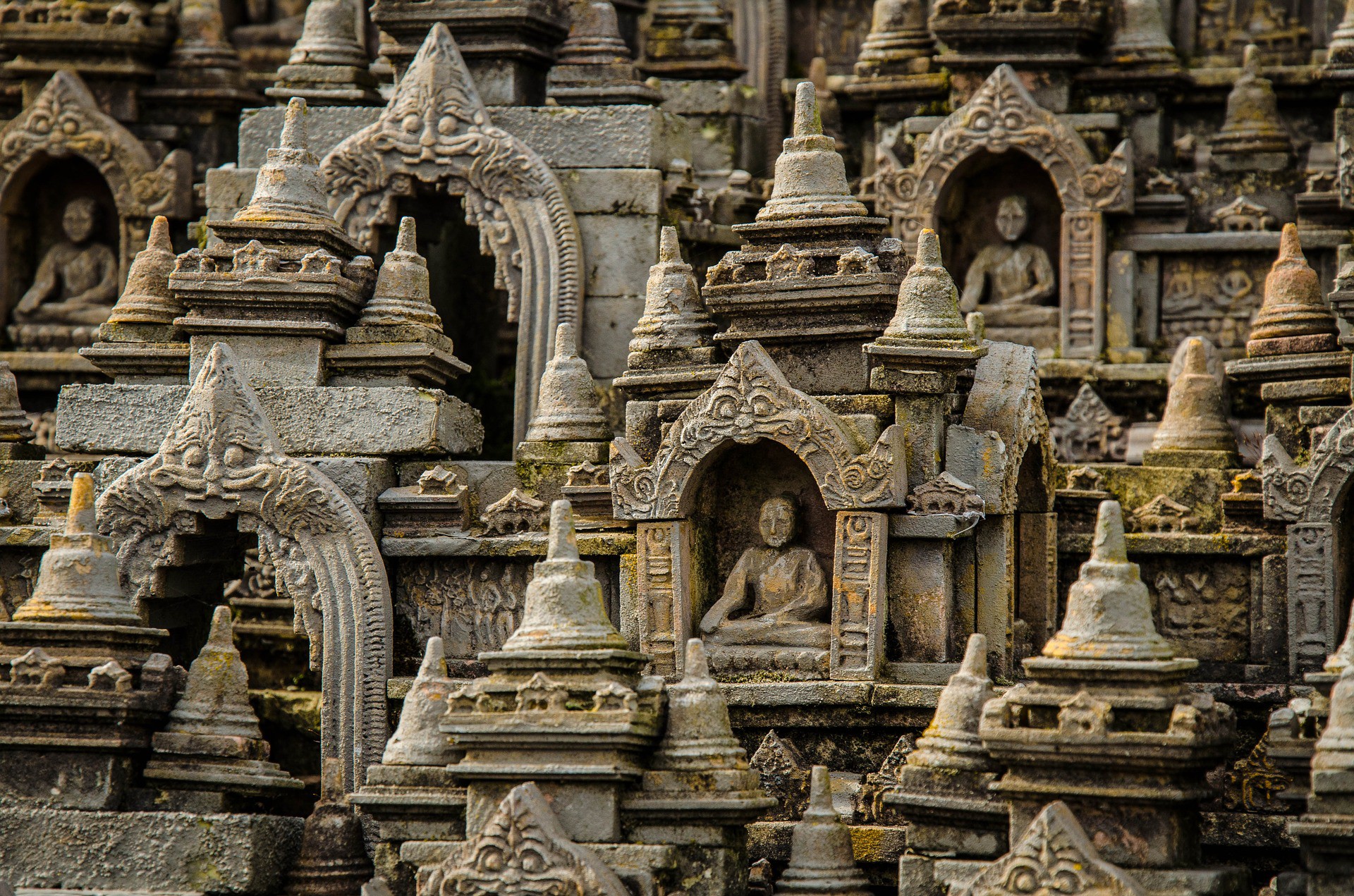
There are also exquisitely carved lions guarding each gateway in the temple, gargoyles protecting the eaves, and in total 504 statues of Buddha dotted throughout the temple. This includes 72 larger-than-life Buddha statues on the circular upper levels, each seated in Lotus position inside of a perforated bell-shaped stupa. That’s a lot, too.
The first photo of Borobudur was taken in 1872, and ever since it’s been on the world’s tourist agenda. Today, about 4 million people visit each year, although only a fraction are foreigners, and even fewer are Buddhist pilgrims. The vast majority of visitors are Indonesian Muslims, who come here not for religious reasons, but to marvel at one of their country’s greatest treasures. And whilst 4 million is a big number, that’s tiny compared to the visitor numbers at places like Notre Dame in Paris, or Stonehenge in England. Being well off the beaten path continues to shelter and protect this man-made wonder.
Borobudur is supposedly the world’s largest single collection of Buddhist reliefs and sculptures. It became a UNESCO World Heritage Site in 1991, and in 1994 the Guinness Book of Records designated it officially as the largest Buddhist temple in the world.
On paper then, Borobudur is a pretty extraordinary place.
***
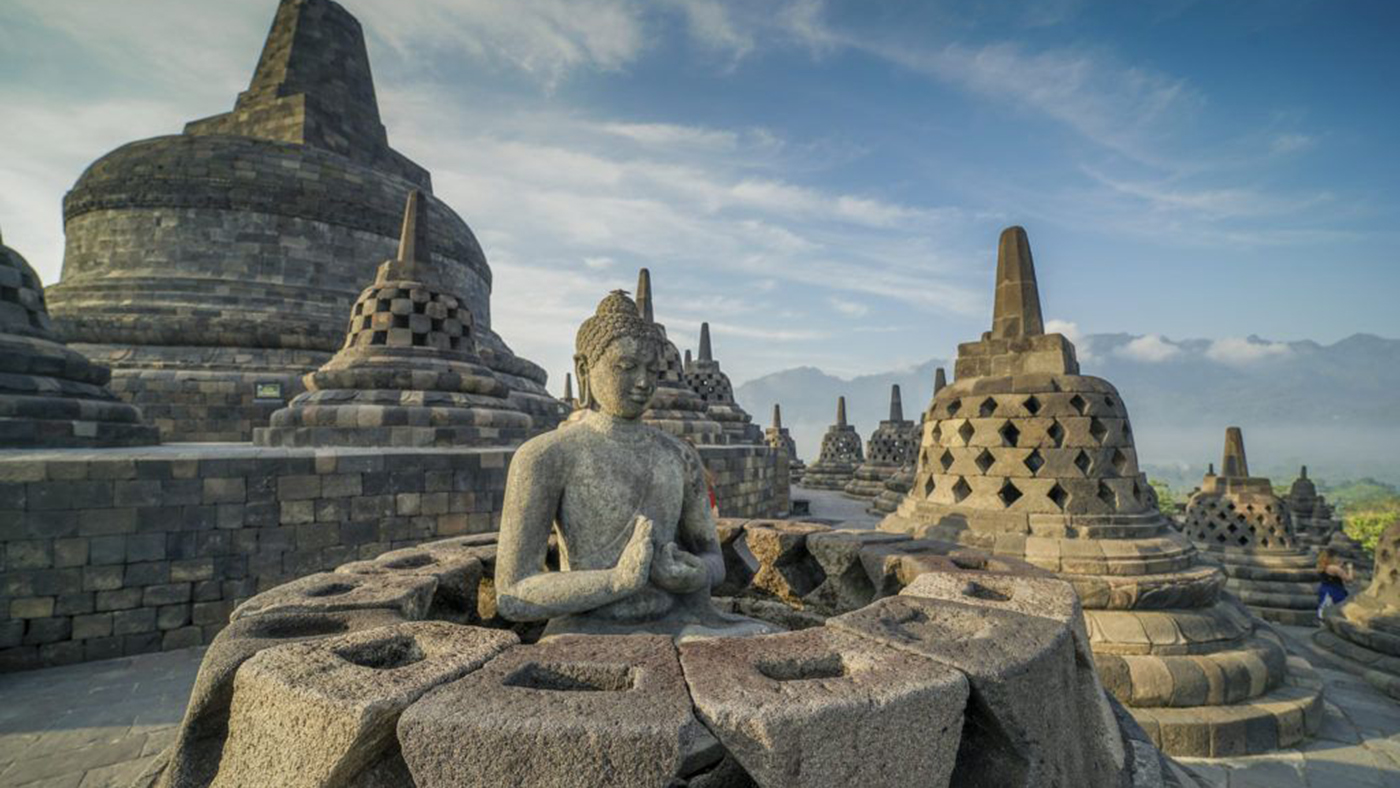
But the reality, however, is so much better than you could ever imagine.
I have been lucky enough to visit Borobudur three times in three decades – first in 1995 while backpacking across Asia, then in 2004 on a family vacation with a one-year-old baby in tow, and most recently in 2016, on a side trip from a beach vacation in Bali.
Each time I have found Borobudur to be exactly the same, unchanged by the progression of time. It is always breathtaking to see, and mesmerizing to experience. And on each visit it has given me “that feeling”, of being an explorer finding somewhere unique and special, for the very first time.
This time around we arrived in the dark, at 5.30 a.m., to allow time to climb to the top and watch the sunrise. A small group of about thirty tourists (all foreigners, because sunrise entry tickets are quite expensive) had gathered to do likewise. But, the scale of Borobudur is such that the other folks there with us seemed to fade into the surrounding stones, so it really did feel like we had the place all to ourselves.
Just after 6.00 a.m. the sun rose, slowly lighting up the ring of surrounding mountains, and then the valley below, that was scenically draped in wisps of early morning fog. Shadows formed and lengthened, and little by little the Buddha statues and stupas around us came into view. It as if they were alive and coming towards us, materializing like friendly ghosts from out of the mist.
Walking around the top level we came across two Buddhist monks, visiting Borobudur on a pilgrimage from Thailand. They were wrapped in flowing orange robes, and were seated cross-legged in the shadow of a stupa, preparing to meditate. The elder of the monks smiled gently at me, and invited us to join.
So we found a spot on the stones in front of them, and for ten minutes just sat there, in complete stillness and silence, eyes closed, meditating. The only sound to be heard was of roosters crowing to greet the dawn, and a Muezzin calling local villagers to prayer. It was such a wonderful experience: one of those rare times when using the word “magical” is not a cheesy overstatement.

When it was fully light we began a lengthy descent down the temple, level by level. This was a reversal of the usual course – Buddhist pilgrims are supposed to start at the bottom and work their way upwards, ritually circling each level on their ascend to the top.
Along the way our guide picked out and explained a tiny selection of the thousands of statues, sculptures, murals and carved reliefs, which would otherwise have been overwhelming. They are marvelous works of art, depicting divine beings and deities, and stories from the life of the Buddha. But also much more mundane things, like scenes of farming, village life, marketplaces, flowers, domestic animals, and even a ship. This for me was a highlight: images of ordinary life, that made the whole place feel all the more accessible and thus all the more human.
Although the real highlight was the one found in my imagination. You see, I had read that during the initial excavation of Borobudur, the workers found bits of plaster, color pigments, and fragments of gold foil. This means that when it was first built, Borobudur’s reliefs were probably brightly painted, a far cry from the slabs of gray-black stone we see today. It was only when I squinted my eyes, and allowed myself to drift back in time, that the full majesty of Borobudur was revealed to me: a masterful, artful, and colorful celebration of Buddhism and life, on a grand scale.
***

By the time we reached the base level at around 10 a.m., the sun was already high in the sky, and it was scorching hot. The parking lot was jam-packed with buses, and thousands of Indonesians (mainly groups of school kids on excursion), were streaming into the site as we were leaving.
I stopped and looked back behind me for one last view, expecting to see a monument overrun by tourists. But there were none. As soon as the hordes had ascended the steps to the first level, the bulk of the surrounding balustrades hid them completely from view. No matter how many people were pouring in, Borobudur was able to swallow them all up, and they just disappeared.
So my parting image of Borobudur is the same today as it was more than twenty years ago. From a distance the temple looked as still and peaceful as ever, her Buddha statues keeping a watchful eye out over the surrounding fields. It could just as easily have been 1916 as 2016. More than that, I could just as easily have been the intrepid explorer of old that I always dreamed of being as a kid.
For the second time that morning, it occurred to me that when talking about Borobudur, use of the word “magical” is more than warranted.
